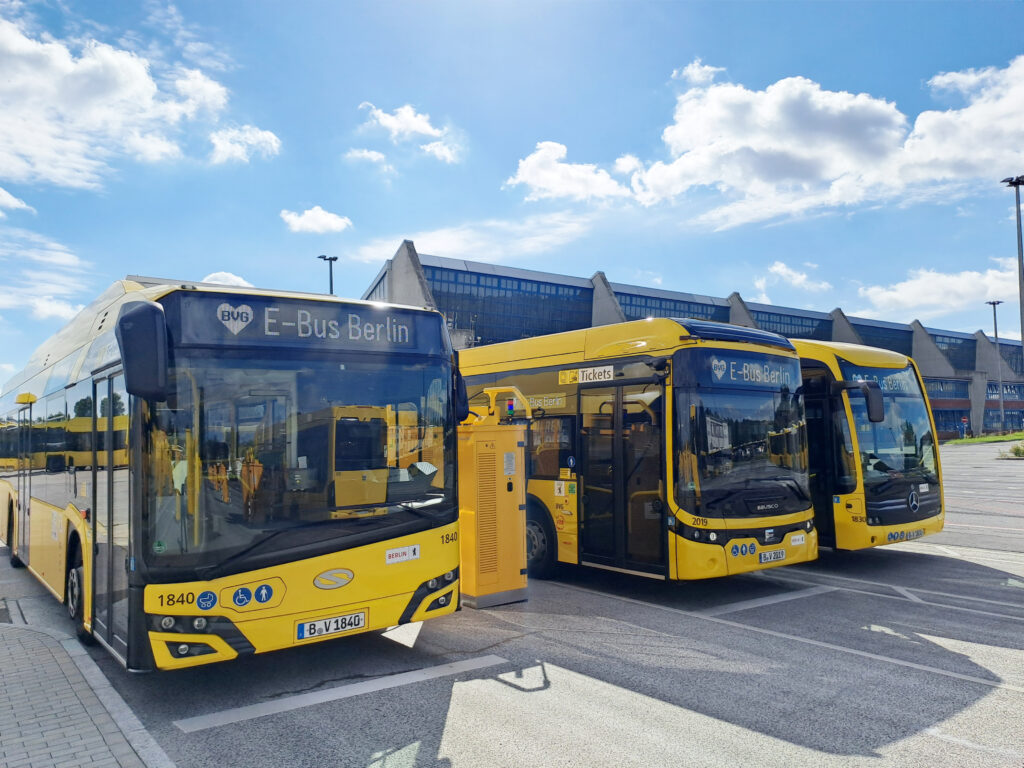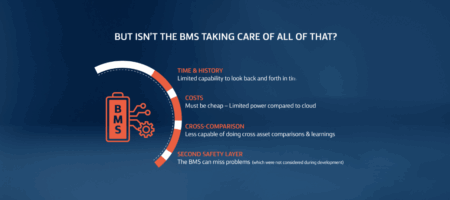
Like a flook of sheep
*Original published in the magazine “Sustainable Bus”, issue September 2023; page 32 – 34
Batteries are maintenance free – that’s what’s generally said. No oil change, no cylinder head gaskets, almost no brake wear, no consumables, no exhaust: Perfect for 24/7 operation. Also, technological progress just makes them better and stronger. But is that true? Not necessarily. The quest for longer range rather led to a decline in lifetime. Early NMC-based* batteries lasted more than 2000 cycles before end-of-warranty** – far too much for cars (more than 300 000 km). Automotive technology has thus approached the 1000-cycle mark, also impacting the bus industry and thus raising the importance of lifetime management and careful operation.
Are batteries “maintenance free?
But even more important in daily business is availability and safety. A battery is like a flock of hundreds of single cells, with delicate cables, electronics and sensors tying them together. We know from Diesel engines how vulnerable such clockworks are to component issues – but here, something is peculiarly different: The cells themselves.
Does the weakest sheep determine the behavior of the entire flock?
Any difference in quality or property among the flock of cells will impact the performance of the entire herd. The battery management system (BMS) is there to handle such deviations: asymmetries in voltage/state of charge are “balanced” out to some degree, e.g. during idling after charging. But if the asymmetry has become too pronounced, or if the BMS is unable to sense it (a huge problem of LFP), a battery can just shut down or show unexpected behaviour, such as sudden standstill, erratic jumps in State of Charge or significantly reduced range. But why do such ‘evil’ asymmetries arise in the first place?
On balancing, BMS, diagnostics
Balancing works best during rest, so heavy use reduces balancing efficiency, especially for LFP. Also, small quality differences will intensify due to imperfect cooling. Standard BMS’ can handle normal spreads, but outliers always exist. Also, the electronics can only detect an existing problem and are limited in predicting them. All of that is amplified by strong usage conditions like fast charging or low temperatures make it even worse, raising the likelihood of safety critical, cell-internal damages.
Fine precursors for these bad things can be sensed in the interplay of voltages, currents and temperatures (but: temperature is the last to react!), but they are often too subtle and gradual for any BMS to spot unambiguously and without being too squeamish. Online diagnostic tools can give early indications on things that could later become problematic, helping to sort, assess, and to find appropriate remedies – as this was the case in the BVG case study. The anomaly detection allowed the vehicle to be taken out of service and the battery system to be repaired by the manufacturer.
Solutions
Cost efficiency and safe and reliable operation is the responsibility of the operators. Transparency, the ability to react in advance, and the capability to perform root cause analyses, will become daily routine as the number of electric buses grows.
Only with access to the basic battery signals, the above-mentioned actions can be taken. Luckily, battery and vehicle data sharing standards like VDV338 and ITxPT make their way into tenders and procurement processes, and more and more fleet management solutions and third-party providers offer simple and efficient solution for battery health, status and quality analysis based on battery field data.
* NMC stands for Nickel Manganese Cobalt and refers to the dominant material mix in this Li-Ion sub type’s composition of the cathode. NMC is “the” technology of Korean, Japanese and other non-Chinese manufacturers like Samsung, LG, SK or Panasonic (whereas Chinese manufacturers like BYD or CATL predominantly produce LFP)
** note: end of warranty is not equal to end of life!
BVG’s way in dealing with battery technology
BVG aims to decarbonize its entire bus fleet of approx. 1,750 electrically powered buses by 2030. As early as 2023, 228 e-buses will be on the roads of Berlin. A vehicle tender for a framework contract for new electrically powered articulated buses is currently underway.
Besides charging infrastructure, what worries you the most?
Doãn: The battery technology of buses is subject to very dynamic development and is therefore a key component of new vehicles. In addition to passenger safety concerns and compliance with the extensive warranty conditions, we are confronted with a complex electromobility system. At present, volatile general conditions are a constant companion and make future planning difficult. Electromobility is currently associated with high costs, as there is currently no 1:1 replacement of vehicles.

Regarding the battery, which responsibilities do you see for the manufacturer and which for the public transport operators respectively owners?
“The vehicle manufacturers are rarely the battery manufacturers themselves. So, the high-voltage battery is a subsystem that the vehicle manufacturers integrate into their vehicle concepts, and the responsibility must lie with the battery manufacturers to monitor the production process accordingly. As the operator of the vehicles, I see the responsibility to ensure the safe operation of all components, whether through maintenance intervals or battery diagnostics. A “defective” battery cell can be detected much earlier than when it fails. As a transport company, we want to deal with this ourselves in order to build up internal expertise. In doing so, we are looking for supportive and experienced partners.”
What tangible results have you already been able to achieve with battery diagnostics?
“Although for the time being only a small part of our electrically powered vehicle fleet is being monitored by external partners, we have already had our first taste of success.
A few months ago, an anomaly was detected that indicated a problem with individual cells, with the potential for vehicle failure. The anomaly detection allowed the vehicle to be taken out of service and the battery system to be repaired by the vehicle manufacturer within the warranty period.”
What does this mean for day-to-day operations?
“Not only can we convey safety to our passengers, but we can also prove and ensure it. By detecting deviations at an early stage, a technical defect could be detected, checked, and remedied. This indirectly increases vehicle availability in daily operation. Another important aspect of decarbonisation for us is the sustainability factor: with battery diagnostics, the charging management can be analysed and adjusted to extend the life of the battery.”
Does this incident have any influence on future decisions?
“Yes. From this case study we have seen the possibilities that battery diagnostics / battery monitoring offer. As BVG, we must continue to work intensively on the topic of battery diagnostics, which means both building up internal know-how and working continuously with partners in the areas of battery, charging and drive technology.”


